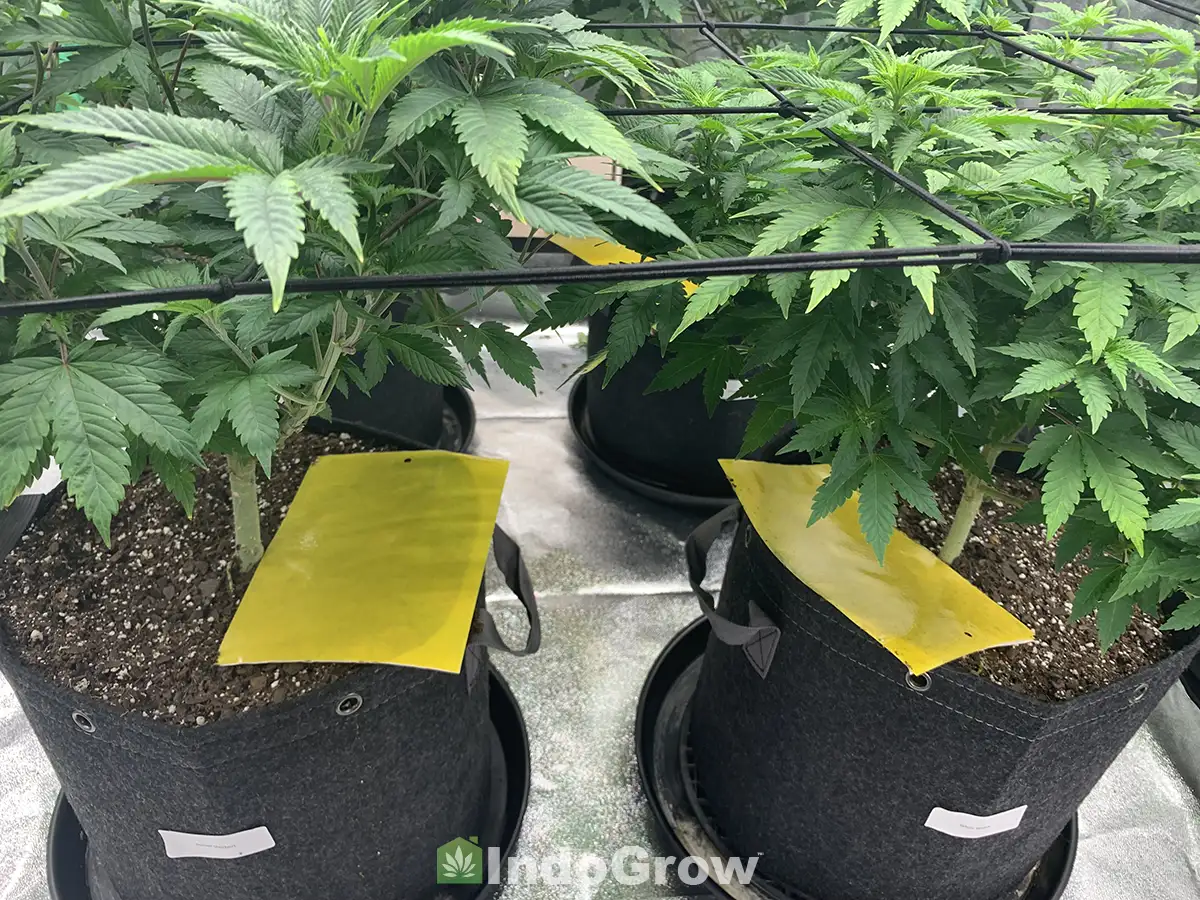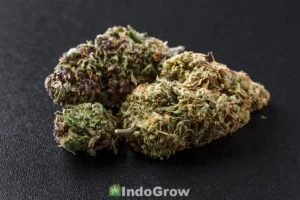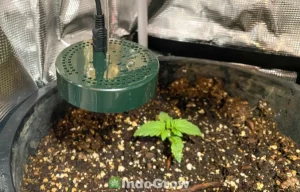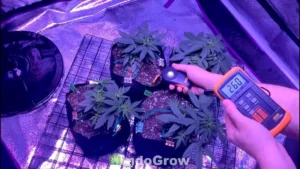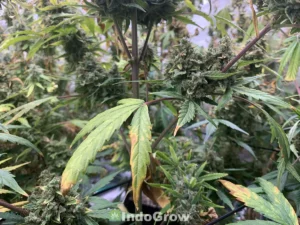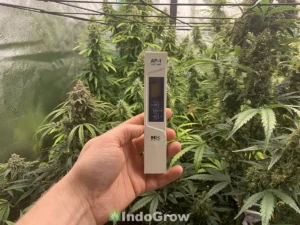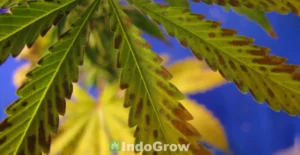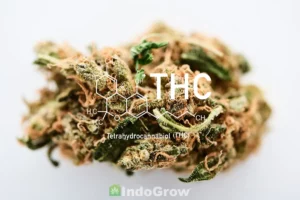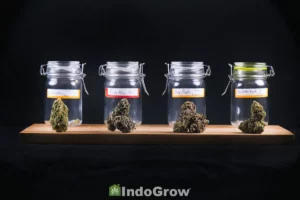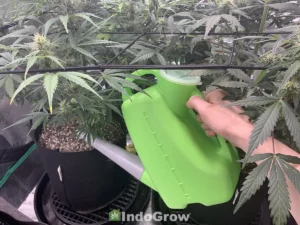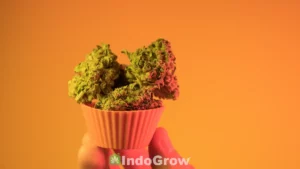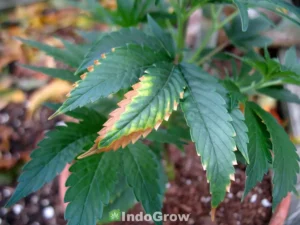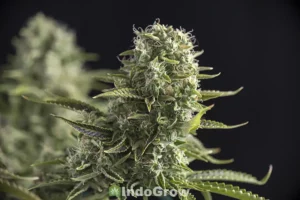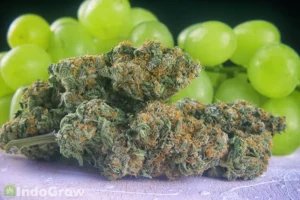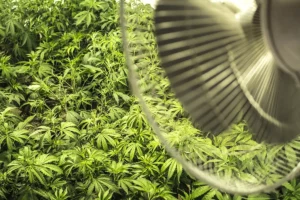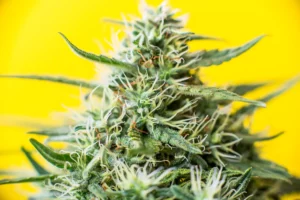Cannabis integrated pest management (IPM) is a collection of techniques used to prepare for, monitor, and control potential pest outbreaks when growing cannabis. Pests including fungi, insects, mites, and others can cause serious damage to cannabis plants, slowing their growth, stunting their flowering, and even killing the plant entirely.
This article will walk you through the basics of IPM strategy, arming you with the knowledge you need to protect your plants from any pest situation that may arise.
What is Integrated Pest Management (IPM)?
Integrated pest management, often abbreviated IPM, refers to the program of pest management strategies used to protect cannabis plants from fungi, insects, mites, slugs, and other pests. No single pest removal strategy can successfully deter every type of cannabis pest, so growers often integrate multiple pest management strategies into their overall plan for their grow.
Some of the main components of IPM strategy are prevention, observation, climate control, continuity, and safety. In order to successfully implement IPM, you must prepare a plan for common pests before planting and select healthy lineages and individual plants. During the grow, you must keep up with observing your plants carefully, continuing pest control measures, and monitoring products used for their safety both for the cannabis plants and the humans who will eventually consume them.
Why is IPM Important for Cannabis?
IPM focuses foremost on keeping pest levels low enough to protect the crop from economic damage. This means protecting leaves, roots, and buds so that the plant grows at a healthy rate and produces the maximum quantity and quality of flowers. Although it is more or less impossible to keep a cannabis plant 100% pest free, drafting an IPM strategy early on will prevent pests from overtaking your grow and ruining your crop.
Pests can cause significant and wide ranging damage to a cannabis plant if they are allowed to multiply out of control. Damage to leaves can decrease the plant’s ability to photosynthesize and cause the plant to waste water and nutrients building new leaves. Damage to the roots can disrupt the flow of water and nutrients through the plant, and damage to the flowers can ruin the harvest entirely.
In addition, plants battling a pest problem will grow more slowly, use resources less efficiently, and become more sensitive to changes in their climate. While the effects of a pest infestation can be disastrous to your crop, good IPM strategies can halt the spread of pests before they become a problem.
Common Cannabis Pests
Some of the most common pests for indoor cannabis plants include mold, powdery mildew, spider mites, scale insects, aphids, and more. These small but persistent pests often thrive in humid, crowded grow rooms with no natural predators to thin their numbers.
A huge variety of pests can also prey on outdoor plants including caterpillars, leaf miners, slugs/snails, crickets, grasshoppers, ants, birds, and much more. Many of these outdoor pests are comparatively larger and may or may not live directly on the cannabis plant, instead visiting it only to feed.
Below you will find a more comprehensive bulleted list of potential cannabis pests for reference.
● Gray Mold
● Powdery Mildew
● Ants
● Aphids
● Barnacles/Scale Insects
● Broad Mites
● Spider Mites
● Russet Mites
● Mealybugs
● Caterpillars and Inchworms
● Fungus Gnats
● Leafhoppers
● Planthoppers
● Leaf Miners
● Crickets
● Grasshoppers
● Slugs/Snails
● Thrips
● Whiteflies/White Flys
Cannabis IPM Strategies
All IPM strategies involve these five basic steps for success: monitor, identify, assess, implement, and evaluate. High quality IPMs are holistic and begin with monitoring the plant’s health and quickly identifying potential problems.
The grower must then assess possible solutions to the problem and implement them before evaluating their successes and failures for next time. The next portion of the article will describe in detail how to prepare yourself and your crop for IPM success, monitor for pests, and intervene when pests are discovered.
Pest Prevention
Preventive measures are essential part of cannabis IPM strategies, as it is oftentimes much easier to prevent a pest outbreak then to treat an active one. Proper pest prevention includes building a knowledge base, climate management, sanitation, and preventative treatments.
Knowledge
Cannabis IPM begins well before you plant your first seed or clone with careful research into pest management subjects. You must research common pests in your area and their signs of infection as well as the climatic conditions that allow them to prosper. In addition, you should spend time researching your individual cannabis strains to learn more about their specific pest resistances and vulnerabilities, as well as any special care requirements they may need to stay in top health.
Consider purchasing guidebooks or saving helpful websites on cannabis pest prevention and treatment so that you have ready access to the information when you need it. It can be overwhelming and nearly impossible to memorize huge tracts of information on every possible cannabis pest, so keeping familiar reference materials around will likely come in handy. Staying in contact with other experienced growers either in person or online is another great way to get a second opinion if you are concerned about any aspect of your plant’s health.
Climate Management
One major component of pest prevention is proper climate management, also known as cultural control. These strategies make up the bulk of pest prevention measures, and include strategies aimed at controlling environmental factors such as temperature, humidity, ventilation, plant spacing, irrigation practices, and more. Controlling these factors alone is often enough to keep most pests below the threshold of causing crop damage.
Temperature and humidity are a great place to start with climate management. Excessively humid conditions in particular often provide the ideal environment for pests, with fungi enjoying cool humid air and many insects preferring warm humid air.
Cannabis needs a humidity between 40-70% and a temperature between 70-85 F to thrive, preferring lower humidity and higher temperatures as the plant matures. Consider investing beforehand in equipment such as fans, ac units, heater, humidifiers, or dehumidifiers according to your local climate so that your grow room remains within ideal parameters throughout the grow.
Ventilation is another critical area to look at in terms of pest prevention, as poorly ventilated grow rooms with pockets of stale, moist air are favorable to a wide variety of common pests such as mildew and mites. Equipment such as oscillating fans, exhaust fans, ductwork, and passive vents will help you pull fresh air into the room and keep it circulating well throughout the day. Trimming the lower fan leaves from your plants and keeping them spaced an appropriate distance from one another will also help with ventilation.
The frequency and method of watering can also impact pest management, as oversaturated soil, wet leaves, and pools of water are prime breeding grounds for many pests. Best watering practices include watering at soil level after the soil has partially dried out, and keeping runoff trays from developing stagnant pools of water. In hydroponics systems, water should be regularly refreshed and aerated to keep it from becoming stagnant.
Sanitation
Proper sanitation is another important aspect of pest management, as unclean grow areas can lead to the introduction and proliferation of pests. Sanitation measures include inspecting and quarantining new plants, sanitizing tools, and keeping the grow room clean and tidy.
One essential part of keeping your grow area sanitary is carefully controlling and monitoring what biological materials come in or out of the room. When purchasing new clones or other live plant material, it is advisable to quarantine the new plants for a couple weeks, as they may be harboring pests that could spread to your established grow room and create a much larger problem. To further avoid contamination, try to avoid reusing soil or taking soil from outdoors, as it has a much greater likelihood of harboring pests or their eggs/spores.
Within the grow room, careful cleaning is essential to keep pests at bay. Products such as isopropyl alcohol, hydrogen peroxide, or diluted bleach can be used to sanitize gardening equipment in between uses. To limit potential habitats for pests, any debris such as spilled soil or dead leaves should also be regularly cleared away, and piles of clutter should be minimized or removed wherever possible.
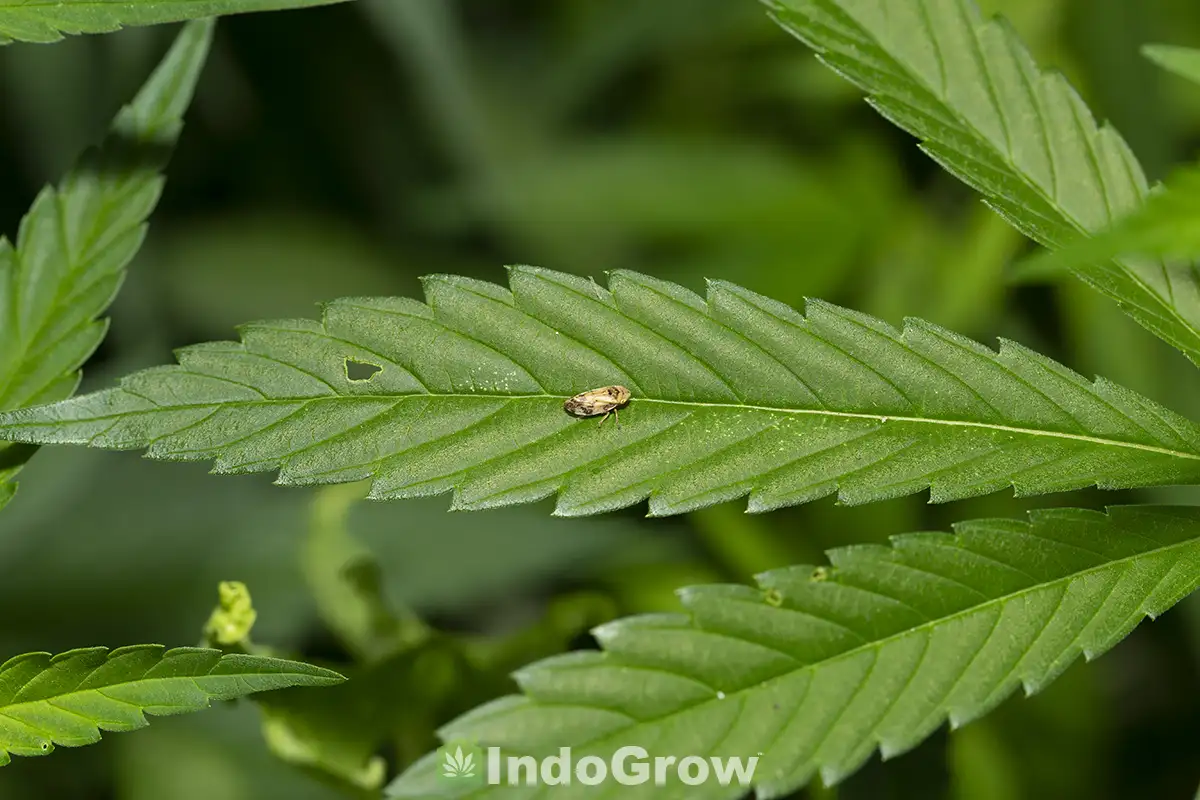
Preventative Amendments and Foliar Sprays
Some growers choose to use preventative measures such as foliar sprays or soil amendments as an additional line of defense against pests.
One of the most popular foliar sprays is neem oil, a natural product of the neem tree which deters some pests such as thrips, mites, and aphids. Neem oil is a safe, non systemic pesticide which can be applied once every ten days up until three weeks prior to harvest. Another popular insecticidal foliar spray is potassium soap, which can also be mixed with neem oil for additional protection.
Growers may also add preventative amendments to their soil, such as diatomaceous earth. This natural product made of powdered fossilized algae can damage the exoskeletons of many common pests, and it may additionally improve the water retention and nutrient availability of your soil.
Pest Monitoring
Another important aspect of cannabis IMP plans is constantly monitoring your setup for signs of pests. These signs might include the pests themselves as well as eggs, spores, feces, or damage to the leaves, flowers, and roots of your plants.
Plant Monitoring
Cannabis plants can be attacked by a wide variety of pests including insects, mites, fungi, nematodes, and more, but careful monitoring of your plants can help you detect these pests before they multiply out of control. Leaves, stems, and flowers should be carefully inspected each day to look for signs of a growing pest problem.
For cannabis leaves, check the top and undersides of the leaves for anything unusual including small light or dark colored spots, bits of fuzz or webbing, or anything else that appears abnormal or different from previous days. A small magnifying glass can help you get a closer look at anything suspicious on the plant. What appears to be just a small white spot to the naked eye could be a larva, an egg, a spot of mold, a bit of dust, or many other things under the magnifying glass.
Some insects such as aphids may also produce drops of amber or clear fluid on the underside of the leaf, known as honeydew, while spider mites are known to produce white webs on the leaves and stems. Besides the leaves, be sure to check other areas of the plant as well as the soil for signs of pests.
Sticky Strip Monitoring
Placing sticky strips, also known as sticky traps or sticky tape, near your cannabis plants is another good way to monitor for common pests. Small flying or jumping insects will become stuck to the trap, allowing you to detect their presence and relative abundance when you inspect the traps later.
While sticky traps will alert you to the presence of pests, they are unable to capture early life stages of pests such as eggs and larvae, making them ineffective for serious pest control.
Examples of pests that can be caught by sticky traps include fungus gnats, thrips, whiteflies, mites, and aphids. Sticky traps are typically yellow, as this color is attractive to many insects and provides a high contrast viewing surface. However, blue sticky traps may occasionally be used for attracting thrips.
For best results, traps should be placed close to the canopy of your plants as well as near doors and vents. Traps may be hung from the ceiling or attached to wooden dowels and staked into the plant pot.
Pest Intervention
Once you detect the presence of pests through plant and sticky trap monitoring, you must move on to the intervention stage of your IPM. This involves disrupting the lifecycle of the pests or altering the environment to be inhospitable to them. The four major types of pest intervention are environmental intervention, mechanical intervention, chemical intervention, and biological intervention.
Environmental Intervention
Environmental interventions involve changing the climate of your growing area to be less hospitable to pests. These interventions may include lowering the humidity, increasing air circulation, or lowering temperatures. Removing open sources of water and cleaning up spilled soil or dead leaves will also decrease the areas available for pests to live and breed.
In general, more airflow and lower humidity will result in fewer pests. Dehumidifiers, air conditioners, and fans can all help you control the environment around your plants and decrease pest volume.
Mechanical Intervention
Mechanical intervention refers to physical steps taken to remove pests from the grow area. These interventions may include trimming infected leaves, physically destroying pests and their larva/eggs, and quarantining infected plants.
When you discover a pest infestation on one of your plants, you must move quickly to destroy infected leaves and segregate healthy and infected plants. While mechanical
interventions alone are rarely enough to defeat a pest problem, they will help slow the spread of the infestation considerably.
Chemical Intervention
Chemical intervention involves treating plants or their soil with chemical agents to kill or drive off pests. Since cannabis is a crop intended for human consumption, you must take care whenever possible to use only natural pesticides and avoid spraying anything onto the mature flowers.Popular chemical interventions include foliar sprays like neem oil as well as soil additives like diatomaceous earth.
Biological Intervention
Biological intervention involves the introduction of natural predators or competitors into the grow room which eat pests. One of the most popular predatory insects for this purpose is ladybugs, a beneficial insect which eats aphids and mites in large quantities. Besides ladybugs, some growers use other bugs including flower bugs, jumping spiders, and lacewing larvae.
Conclusion
Cannabis IPM, or integrated pest management, strategies are an essential tool for keeping your cannabis plants healthy and pest free. Successful IPMs involve research, preplanning, monitoring, and implementation. Although completely eliminating pests from cannabis is impossible, a well executed IPM will keep pest levels below the threshold of economic damage.

Rocky Horton
Author
Rocky Horton is an experienced cannabis grower and the founder of IndoGrow. The IndoGrow editorial team has over four decades of combined growing experience. Learn more.

